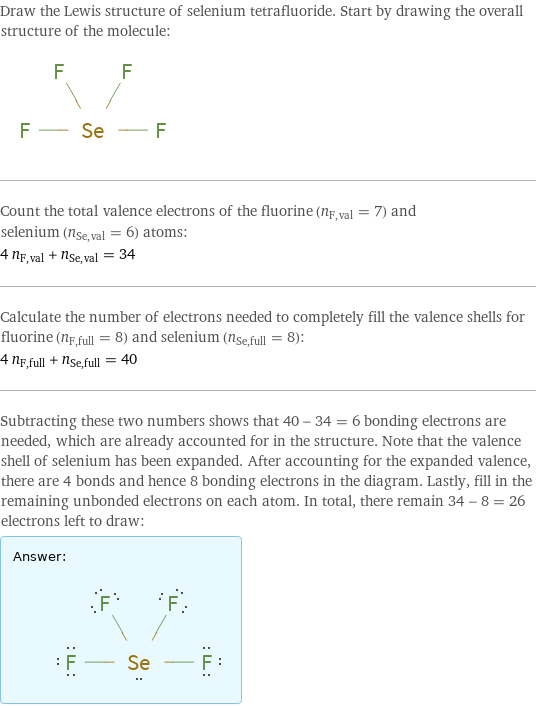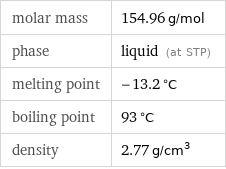Input interpretation

selenium tetrafluoride
Chemical names and formulas

formula | F_4Se name | selenium tetrafluoride alternate names | selenium(4+) fluoride | selenium fluoride | selenium(IV) fluoride | tetrafluoridoselenium mass fractions | F (fluorine) 49% | Se (selenium) 51%
Lewis structure

Draw the Lewis structure of selenium tetrafluoride. Start by drawing the overall structure of the molecule: Count the total valence electrons of the fluorine (n_F, val = 7) and selenium (n_Se, val = 6) atoms: 4 n_F, val + n_Se, val = 34 Calculate the number of electrons needed to completely fill the valence shells for fluorine (n_F, full = 8) and selenium (n_Se, full = 8): 4 n_F, full + n_Se, full = 40 Subtracting these two numbers shows that 40 - 34 = 6 bonding electrons are needed, which are already accounted for in the structure. Note that the valence shell of selenium has been expanded. After accounting for the expanded valence, there are 4 bonds and hence 8 bonding electrons in the diagram. Lastly, fill in the remaining unbonded electrons on each atom. In total, there remain 34 - 8 = 26 electrons left to draw: Answer: | |
Basic properties

molar mass | 154.96 g/mol phase | liquid (at STP) melting point | -13.2 °C boiling point | 93 °C density | 2.77 g/cm^3
Units

Liquid properties (at STP)

density | 2.77 g/cm^3
Units

Chemical identifiers
(F)F InChI identifier | InChI=1/F4Se/c1-5(2, 3)4 EU number | 236-703-6 Gmelin number | 100961](../image_source/4915b3a5f805f709cbc93c33f9b3cdc6.png)
CAS number | 13465-66-2 PubChem CID number | 123311 SMILES identifier | F[Se](F)(F)F InChI identifier | InChI=1/F4Se/c1-5(2, 3)4 EU number | 236-703-6 Gmelin number | 100961